#superblocks
Explore tagged Tumblr posts
Text
City of Longevity – the Barcelona Meet-up take away.

At the Smart City Expo World Congress—attended by more than 25,000 people from 800 cities—we partnered with the Barcelona City Council to host a special offsite event, the Barcelona Meetup, for some of the founding members of the City of Longevity global community. This community was established during the inaugural City of Longevity conference in Newcastle in July 2023.
The purpose of the meetup was to provide updates on the progress of the City of Longevity initiative and to gather feedback and insights from city delegates supporting the program. Additionally, our host, the City of Barcelona, shared their strategic plan and the outcomes of key interventions, with a special focus on the impact of Superilles (or superblocks) on longevity.
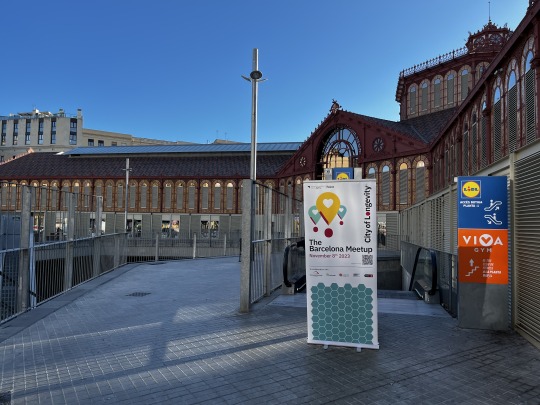
Here are our takeaways:
1.The format: We engage with the city and its citizens.
Thanks to the support of the Barcelona City Council, we held our meeting at the Sant Antoni market, in the heart of the city. As is our tradition, we aimed to eliminate the divide between 'stage' and 'audience,' fostering a discussion where learning comes through dialogue. The topic of longevity is often confined to cultural domains that overlook behavioural patterns, social circumstances, and environmental factors as key determinants of healthy longevity, where "healthy" is closely tied to quality of life. It’s time to place biology and geography on equal footing. Ultimately, the City of Longevity must be embedded within the city to fully absorb and reflect the cultural norms of the host city.
2. Why do we need a City of Longevity? Because we have no choice.
As noted by Joachim Rautter from Berlin: According to the UN, maintaining a healthy weight, exercising regularly, eating a healthy diet, and not smoking can reduce the risk of developing the most common and deadly chronic diseases by up to 80%. Both our lifespan and healthspan—the period during which we’re not just alive but healthy and enjoying a good quality of life—are significantly influenced by our lifestyle, and lifestyles are shaped by the places we live. Cities are the engine that can help citizens improve their lifestyles from the ground up, as Sally Herbert from Newcastle added.
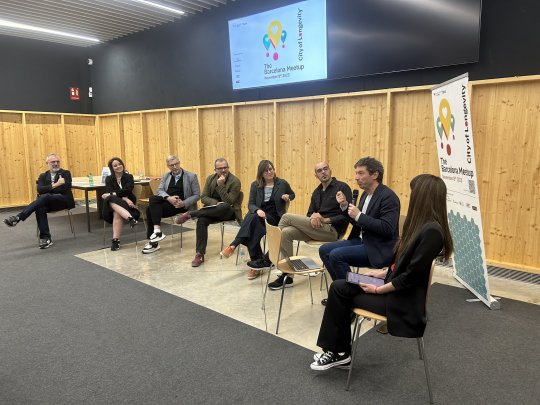
3. Is urban planning a driver for healthy longevity?
The Sant Antoni Market is the epicentre of the Superilles (or superblocks), one of the urban redevelopment projects underway in Barcelona that are literally revolutionizing the concept of public urban spaces, reclaiming for citizens what once seemed to be immovable elements of urban architecture: streets, intersections, and sidewalks.
Much has already been said about Superilles. One of the first studies on their impact suggests that they can contribute to health by reducing both air and noise pollution. However, another study does not confirm whether this strategy encourages people to be more active. It’s too early to draw definitive conclusions. The Superilles still need to transition from being a novelty to becoming a part of everyday life. Thanks to Ariadna Miquel Amengual's enlightening presentation and Daniel Alsina Torra's guided tour of the Superilles, these are our takeaways:
There’s no need to (necessarily) build new spaces; one can intelligently reinvent the existing ones. This is great news for the cities of old Europe, and beyond.
Reinventing existing spaces with people at the centre can foster relationships, encourage walkability, reduce traffic, develop green and cooling areas, expand shared spaces, offer rest and support opportunities, enhance urban connectivity, and reduce air and noise pollution. In our City of Longevity framework, we describe the city as a discreet partner, and the Superilles are a tangible example of this concept.
Changing the architectural context of a space drives behavioural change, affecting both drivers and pedestrians. Pedestrian spaces can be created without demonizing cars or creating ghettos for cyclists, which may be more sustainable and feasible on a larger scale than attempting to completely seal off cities from vehicles.
We’ve likely focused too much on the proximity of services. Proximity also, and perhaps more importantly, means human connection, relationships, and presence. Redesigning spaces is crucial to stimulate this.

4. There is (free) time ahead.
We’ve spent a lot of energy discussing the "15-minute city," but what about the 50 trillion hours of free time we have ahead of us? Collectively, that’s 195 billion hours of leisure per year for those aged 65+ and about 3.9 trillion hours over the next 20 years in the U.S. alone. Considering this phenomenon globally, that's around 50 trillion hours of time affluence—time that needs to be filled with fun, stimulating, nourishing, purposeful, and even transformative activities.
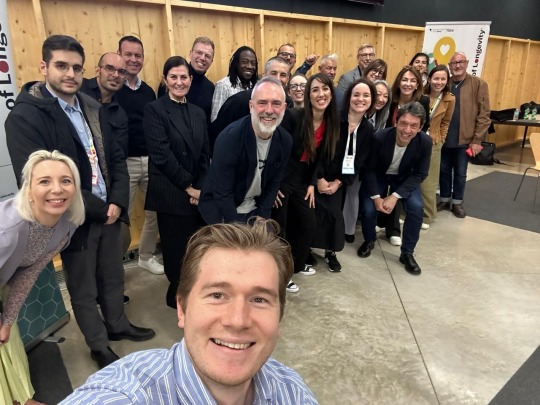
5. Involving citizens is not only right, but also possible.
The experiences of all the cities participating in the debate underscored how citizen involvement and participatory platforms are essential to any discourse on the City of Longevity. It seems obvious, but it’s not always practiced. As Professor Peter Madden said, "Almost none of the innovations on display at the adjacent Smart City World Expo Congress were citizen-driven; there is still a lot of rebalancing to be done." But when done correctly, the benefits to the population and their healthy life expectancy are evident.
6. There is a need for "relationship doctors."
This idea was suggested by Gianluca Galimberti from Cremona. Despite the endemic shortage of doctors, there may be a need to invent new professional roles—relationship doctors, relationship nurses—professionals capable of fostering relationships between citizens when architecture alone is not enough. This role is even more necessary in light of the integration of other cultures into our own.
7. Schools are engines for healthy longevity.
As both Ariadna and Margarita Cejas from Buenos Aires emphasized, schools are not only vital for education but also as spaces for gathering, relationship-building, and fostering the role of children as actors and ambassadors of behavioural change within their families.
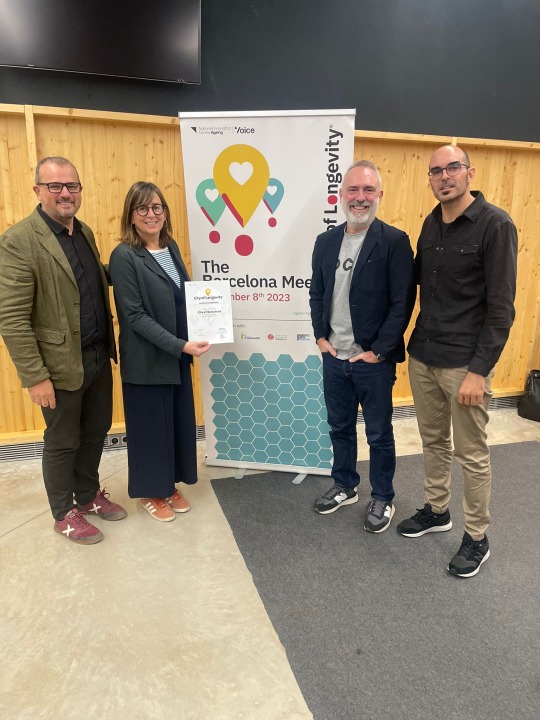
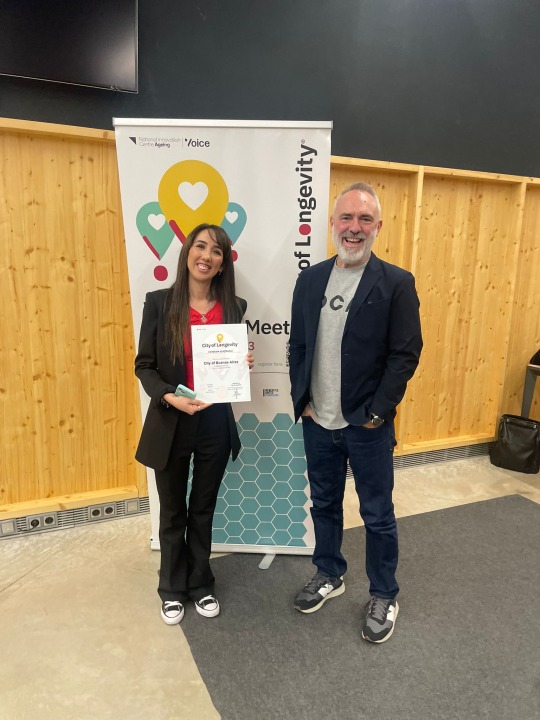
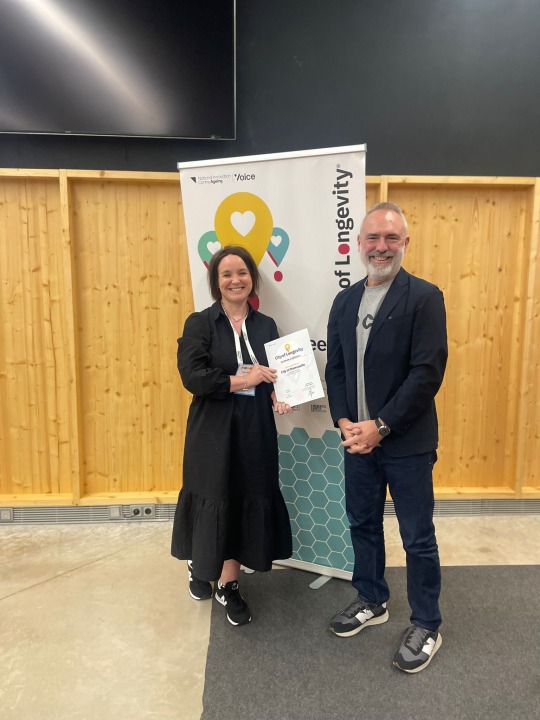
8. Who pays for it?
An orchestrated longevity program needs a budget, and this budget comes from hybrid interactions among all stakeholders. Interventions such as the Superilles yield a return on investment, primarily in society (and, in the long run, by reducing healthcare costs) and in the economy—both local, which benefits from the reclaimed space, and global, which can finally see the trillion-dollar promise of the longevity economy materialize in specific locations. Finally, there’s the data economy. It’s time to engage citizens in a serious discussion about how they can own their digital identity and decide how, and whether, to monetize it. The city must act as an intermediary in this contract, which could revolutionize both the speed of innovation and its sustainability.
#cityoflongevity#dispatchesfromcol#behaviours#barcelona#cremona#newcastle#berlin#buenos aires#superilles#superblocks#event#delegatecities#builtenvironment#urbanplanning#lifestyle
1 note
·
View note
Text
RETOUR SUR LES SUPERBLOCKS BARCELONAIS : LA QUESTION DE LA SANTÉ ET PLUS ENCORE
On vous a déjà parlé des superblocks. Aujourd'hui , on va bous expliquer quelques conséquences de cette stratégie de réduction du nombre de véhicules dans un quartier. #moinsdevoitures #meilleuresanté
Temps de lecture : 15 minutes (avec la vidéo)mots-clés : Barcelona, superblocks, urban planning, santé, qualité de vie Chers lecteurs, En juin 2019, nous avions commencé à vous parler des superblocks de Barcelone (Avez-vous déjà entendu parler des superblocks de Barcelone ?). Il avait fait un carton plein de lecture avec plus de 550 lectures en 2021 et sur moins de 6 mois. Cet article propose…
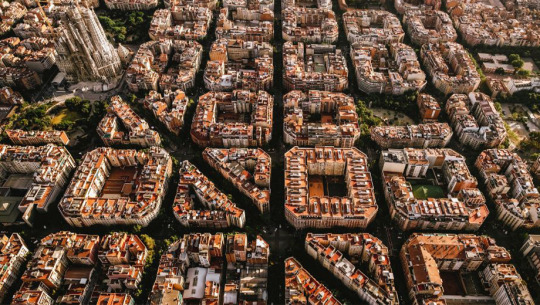
View On WordPress
0 notes
Note
Excellent question. Anyone out there with some detailed information?
tell us about superblocks and how does it work so far in 2024
Some superblocks were implemented in Barcelona with the previous City Council with the plan to continue creating more of them in the next years, but they were very controversial. The current City Council resulting from the last election is of a different political party and they vowed (in an easy vote-grab) to get rid of superblocks, but it would have required so much road work and annoyance that the same neighbourhood organization that had been campaigning to remove their superblock, as soon as it was approved that it was going to happen, backed out and asked to keep the superblock because undoing it would be even more of an annoyance (or were they only trying to battle the City Council that was led by the other party? 🤔).
So uh, how are they working in 2024? I don't dare to answer because I don't live in Barcelona and I don't suffer them first hand, I'm not an urbanist nor anything similar, and people have very strong opinions on both sides and I don't have enough experience to tell the pros and cons. I think it's good to have less cars and more walk-only spaces, so I am in favour of making superblocks, but that's not that useful if it doesn't go together with a better public transport system, and right now the public transport in many areas of the city is collapsed with tourists. First ban cruise ships and big massive events like America Cup, F1, etc from Barcelona and then superblocks will work much better, imo. But the current City Council (PSC) only cares about making money even if it means destroying the city with even more gentrification, so who knows what's going to happen.
I'm sorry I can't answer much but this is way out of my area of expertise and I don't think I can say anything meaningful about it (besides the fact that Bcn needs less cars).
If anyone from a part of Barcelona with a superblock or anyone who is into urbanism wants to comment, please feel free to do so.
8 notes
·
View notes
Text

When your bf complains about your plushie but then you always wake up to this.
Part 1 for context
#sorry it took dorever i was superblocked with doing any art then it broke little when i started watching 911 and then it came back#destiel fanart#destiel#spn fanart#spn#dean winchester#castiel#my art#sasanka27 art#destiel art#deancas#supernatural fanart#art#that kitty filter will be coming back more! cas once somehow clicked on it and never turned it off so now every pic he takes of dean#includes kitty ears haha#my hc so ill have more fun with it
57 notes
·
View notes
Text
incorporating a new headcanon into our belief system: bugs in the bug fables setting continue molting their whole entire life like lobsters. the molted skeletons are very fragile but can be treated to make them tougher like leather, so it's not uncommon for bugs to turn their old skin into clothing or sell it
#bf#molted skeletons are a big ingredient in charms like def exchange and superblock+#and moth and bee skins are very useful for keeping warm in colder areas#of course it's also common for bugs to just eat the molts to regain energy after#so there's still a limited market for it
21 notes
·
View notes
Text
if they show up in your dream it is NOT your sign to unblock them
8 notes
·
View notes
Text
straight up googling superblock barcelona to calm down
#crunchyposts#severance#<- episode got me fucked up. anyways cant wait to learn more about superblocks
3 notes
·
View notes
Text
OHMYGOD is it put the worst takes in maintag day right now why'd I get suggested a post in the actual literal detective conan MAINTAG. About "why's people surprised Shinishi (not even the right spelling) and Kaito are cousins when they look alike" FUCKER GET AWAY! FROM! THE! MAINTAG! Ohhhh I'm gonna have to say this again:
Heiji looks like a dark skinned and spiky haired Shinichi. Okita looks like a lovechild between Heiji and Shinichi. Aoko looks like a messy haired Ran. Haibara looks like a genderbent Hakuba. Komei looks like Toichi. Kogoro looks like Nakamori. SATO LITERALLY LOOKS LIKE CONAN'S TEACHER KOBAYASHI. MATSUDA! LOOKS LIKE! A CURLY HAIRED! KAITO!
Gosho literally recycles the same old character traits and put it on the main characters causing the worst case of same face syndrome THE ARGUMENT THAT SHINICHI AND KAITO LOOKS ALIKE HOLDS NO GROUND WHEN NEARLY HALF THE CAST LOOKS ALIKE TO ONE ANOTHER.
#ariambles#i wish theres a superblock button i need to beam my hatred directly towards that person. IM PETTY TODAY IM SORRY BUT I CANT! I CANT JUST#IGNORE THAT TAKE ITS SO FUCKING ASS! its the most mindless take ever pls keep it to yourself actually. PLEASE KEEP IT AWAY FROM THE MAINTAG#i wouldnt be this mad if it wasnt in the maintag WHY WOULD YOU FUCKING PUT THAT IN THE MAINTAG ITS THE SAME OLD DANCE#its the same old Wretched thoughtless argument ''oh why are you all surprised--'' CUZ EVERYONE LOOKS ALIKE FCKER
1 note
·
View note
Text
youtube
BARCELONA SUPER BLOCKS
_ik
0 notes
Text
What is the “best density” for the design of cities today?
As city populations continue to increase, so will the demand for housing across all incomes. In order to combat sprawl, cities across America need to implement “good” superblocks. But before that happens, a reevaluation of density designs needs to occur. For example, Cincinnati has 52 neighborhoods within the city but when it comes to the variation of the density designs it needs some improvement. We discussed that the “best density” design was around 20 to 25 units per acre. The typical street pattern for this amount of units allows for enough housing developments while also having access to some green space and entertainment. Avoiding the idea of a “concrete jungle” if you will. An example of a block city within Cincinnati would be in the Over-The-Rhine neighborhood. We chose the 1600 block that is encompassed by some of Race St and stretches to Goose Alley. Located off stop 12 of the Cincinnati streetcar, this mixed-use block contains multiple retail shops such as Gorilla Cinema, Pholandthang, High Five Solan, Spruce Nail Salan, Deeper Roots, Wuf Pet Spa, Banasun, Queen City Alchemy, Cherbourg, and Goose & Elder.
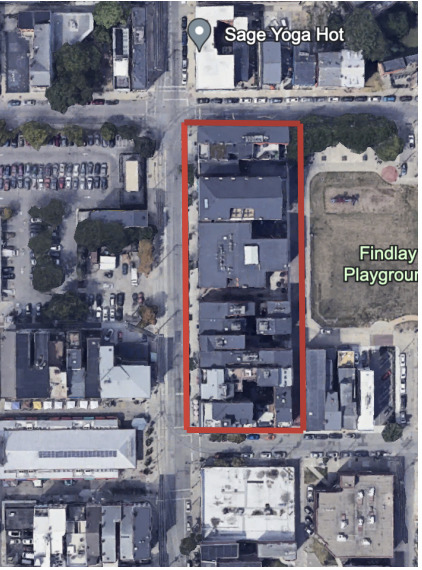
Via Google Earth.
Over-the-Rhine currently does a nice job of trying to prevent “bad” superblocks overall but we specifically chose this block because it represents what a “good” superblock should look like. It is very walkable, the flow of traffic is pretty contained, there’s no feeling of entrapment within the housing options, and there is a community playground/park that serves as greenspace for this city block.
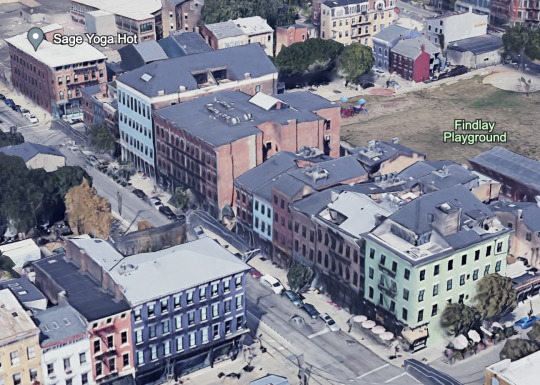
Via Google Earth.
Since this is a relatively small city block, It has around 20 units per acre. The Pedestrian orientated block size makes up for the lower number of units as pedestrians can easily navigate through and around the block. Furthermore, due to the proximity of the popular Findlay market, pedestrian foot traffic can be alleviated with the smaller city block. 2-3 stories of mixed-use space allow for the block to have a plethora of housing and retail options. The design of the buildings is aesthetically pleasing. The range of color, material, and composition makes the space feel authentic.
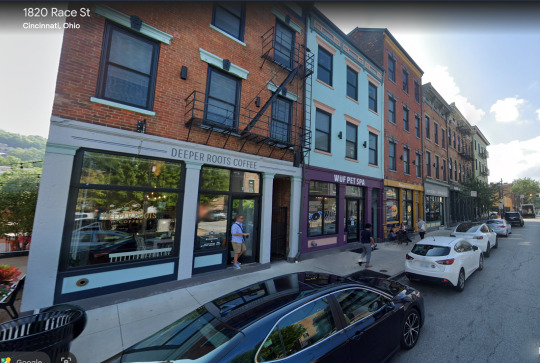
Via Google Earth.
0 notes
Text
RJ showcasing the AC Norm voicing on the Quilter Labs SuperBlock uK
Follow us:
Web: https://www.quilterlabs.com/
YouTube: https://www.youtube.com/@QuilterLabs101
Instagram: https://www.instagram.com/quilterlabs
Facebook: https://www.facebook.com/QuilterLabs
TikTok: https://www.tiktok.com/@quilterlabs
Twitter: https://twitter.com/QuilterLabs
Rumble: https://rumble.com/c/c-2852082
Users Group: https://www.facebook.com/groups/quilteramps
Neunaber Effects Group: https://www.facebook.com/groups/neunabertechnologies
#quilterlabs#amplifier#tone#pedalboard#guitarist#guitar#amp#pedalamp#superblock#UK#Top Boost#analog#solidstate#voicing#lightweight#AC30#AC15
0 notes
Text
youtube
BARCELONA SUPER BLOCKS
_ik
1 note
·
View note
Text

ISSUE 1120: superblock
29 september 2024
387 notes
·
View notes
Text
wait how is it even showing me tonyzarets likes im superblocked by him
16 notes
·
View notes
Video
youtube
💣 XFS “Structure Needs Cleaning” & Superblock Corruption | Server 1 /hom...
2 notes
·
View notes
Text
POV your architect friend wants to talk about the SoCal fires
dawg im being soooo for real right now. it was a matter of days ago that i was thinking to myself that i find it extremely fucked up that in a lot of modern state codes, for new building construction you are NOT allowed to build with flammable materials. if an existing building has, for example, cedar shingles - if that system fails and you have to replace it, by code (if it's more than replacing a few pieces - if you are replacing the whole system) you must replace it with composite materials (tile, plastic, etc) with fireproof ratings. sometimes, in historical settings, they will allow you to use real wood - if it's been heavily saturated with fireproofing chemicals.
and as someone who loves natural materials and lives in a FRIGID CONCRETE AND BRICK FLOODPLAIN WITH NO TREES after being raised in a forest, where my walk to high school was through old growth... i miss the look and feel of wood all around me. it literally hurts my spirit. the thought that you would take this away, or, worse, mimic it in plastic hurts my spirit.
now i am looking at images of the complete destruction of parts of LA. and even when i was longing for cedarbark shingles i knew in my heart - there is a fucking reason for everything in building code. especially once you get outside of residential (i do not work in residential design, it's mostly train station buildings for me, professionally, and museums/research centers in my academic work, per the design prompts) - the code is designed to get as many people out of a building as quickly as possible in the event of an emergency. it must be made so that people (ALL people) can get out before the flames cause it to literally collapse. but i must to confess - a lot of "safe" architecture, because it is built as cheaply as possible, is ugly. it does not move me. i hate hung metal panel rain screens. i hate when developers maximize square footage until we have superblocks of Literal Boxes of Condos with no ornament, no visual interest in massing. density, too, is good. but it does not have to fucking look like that.
there is a topic within architecture academia about what the houses of wealthy people in california should look like/how they will look when rebuilt. we are being made to live in, essentially, concrete bunkers. there's rammed earth. we have todao ando's concrete specs. i love brutalism. it can be so beautiful.
i am not arguing for or against cedarbark vs concrete bunkers. it has just been wild that i was spiraling/mourning the loss of real wood like 5 mins ago and then half of LA burns down....... like "oh yeah. right. That's Why."
2 notes
·
View notes